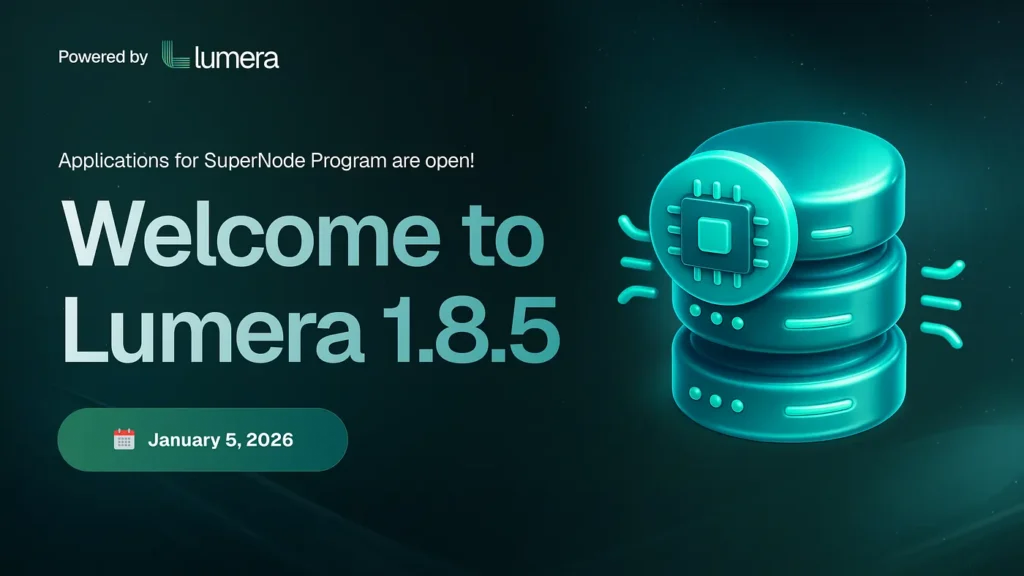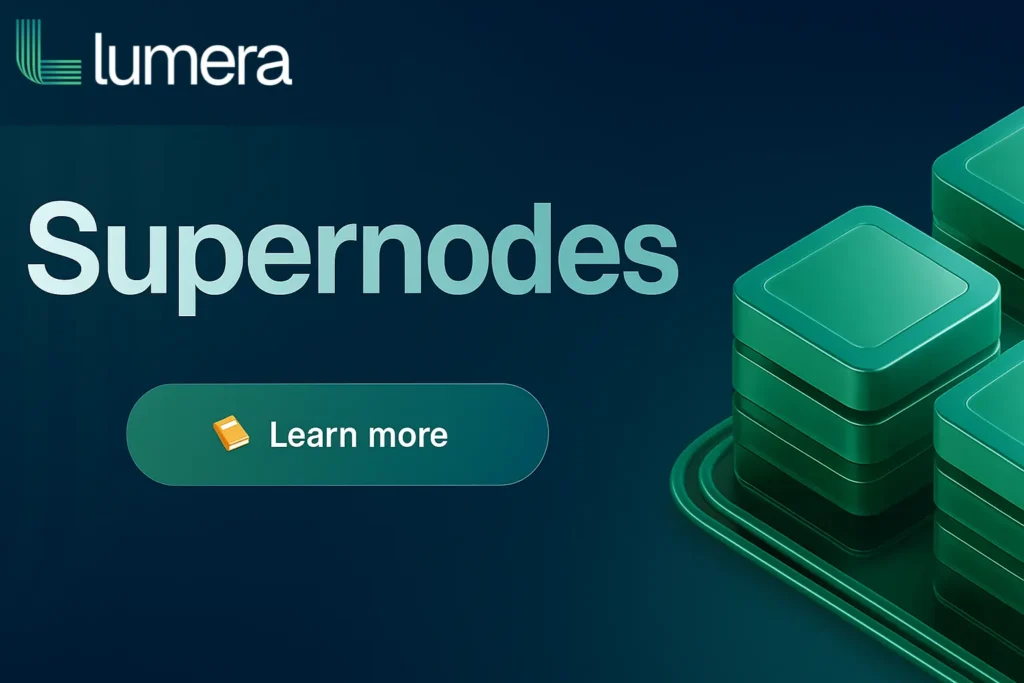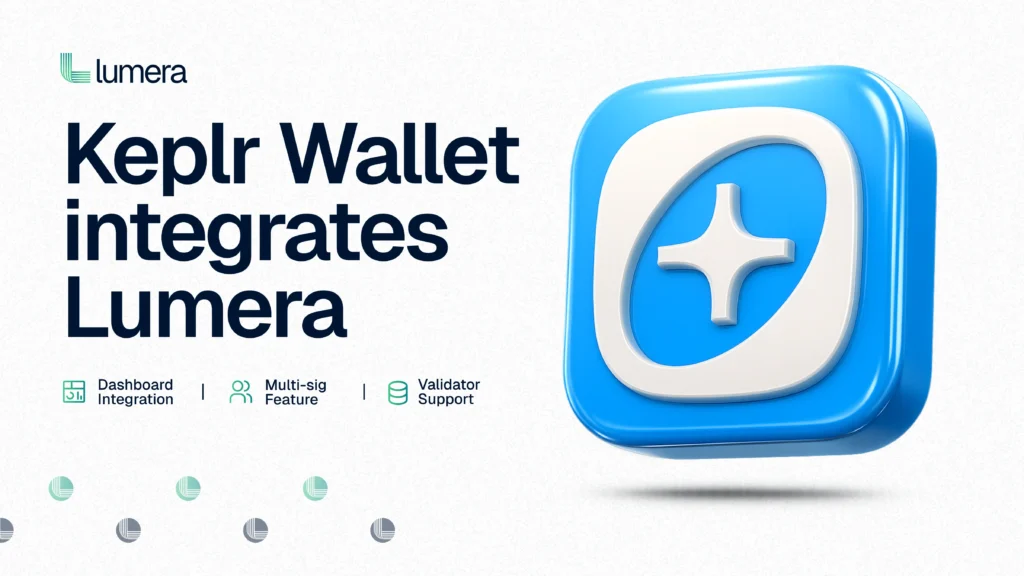Lumera Protocol is a next-generation blockchain built for the age of decentralized AI, autonomous agents, and permanent data storage. Formerly known as Pastel Network, Lumera isn’t just another Layer 1 — it’s a purpose-built, high-performance foundation for the future of Web3 services.
At its core, Lumera combines scalable infrastructure with programmable economic incentives, making it possible for developers, validators, and everyday users to participate in a self-sustaining ecosystem that powers AI-driven applications, censorship-resistant storage, and secure cross-chain interoperability.
Why Lumera Exists
Most blockchains today either aim to be a general-purpose execution layer or focus on niche use cases. Lumera takes a different approach: it’s an application-specific blockchain optimized for intelligent, high-value services.
Its architecture extends beyond standard Proof-of-Stake validators by introducing SuperNodes — high-performance infrastructure that can execute AI models, run authenticity checks on digital content, and store data permanently. This is the foundation of Lumera’s Action & Agent Framework, which makes the network not just a ledger, but an active, intelligent participant in decentralized computation.
The Action & Agent Framework
Lumera’s ecosystem is powered by two core components:
- Actions — Low-level, modular operations handled by SuperNodes. They include things like storing data, verifying authenticity, and running computations.
- Agents — Higher-level autonomous entities that combine multiple Actions to complete complex workflows.
Three flagship modules are available:
- Cascade — Decentralized, permanent storage.
- Sense — AI-powered authenticity verification to prevent fraud and asset duplication.
- Inference — Distributed AI model execution for LLMs and machine learning workloads.
This framework allows developers to build intelligent, autonomous services that can interact with each other without centralized control.
LUME: The Fuel of Lumera
LUME is the native token of Lumera Protocol. It’s used for:
- Transactions — Paying gas fees and service costs.
- Securing the network — Through staking with Validators.
- Powering services — Running Actions and Agents via SuperNodes.
- Governance — Allowing token holders to vote on protocol changes.
Unlike many tokens, LUME includes deflationary mechanics.
- 20% of all transaction fees are burned — permanently removed from circulation.
- Inflation adjusts dynamically based on how much LUME is staked, ensuring the right balance between security and liquidity.
This means LUME’s value proposition grows as network usage increases.
SuperNodes & Proof-of-Service
SuperNodes are the workhorses of Lumera. They go beyond validating transactions by:
- Running AI computations and inference tasks.
- Storing and verifying data permanently.
- Coordinating autonomous agents.
They earn rewards through both Proof-of-Stake (for securing the chain) and Proof-of-Service (for executing network services). This dual-reward model keeps them highly incentivized to perform at the highest standard.
Decentralized Governance
LUME holders shape the protocol’s future through on-chain governance. Proposals cover everything from fee structures to protocol upgrades. Voting is stake-weighted, and deposits are required to prevent spam.
Validators vote on behalf of their delegators — though any delegator can override their validator’s choice.
A Sustainable Economic Model
Lumera’s tokenomics are designed to be self-balancing:
- Dynamic inflation control keeps staking rewards competitive without flooding the market with tokens.
- Transaction fee burning creates scarcity over time.
- Service fees grow as more developers and users tap into Lumera’s AI and storage capabilities.
The result is a network that funds its own growth while aligning incentives for all participants.
The Vision Ahead
Lumera isn’t trying to be everything to everyone — it’s aiming to be the backbone of decentralized intelligence. By combining AI services, permanent storage, and trustless governance in one chain, Lumera provides a foundation for Web3 applications that need to think, remember, and act — without relying on centralized intermediaries.
Whether you’re a developer building an AI-powered dApp, a validator securing the network, or a user looking for censorship-resistant storage, Lumera offers the tools and incentives to participate in a growing decentralized economy.
About Lumera Protocol
Lumera Protocol is a high-performance blockchain purpose-built for AI-driven Web3 economies, integrating a Validator-SuperNode architecture to enable decentralized AI services, trustless computation, and secure data storage. Built on cometBFT Proof-of-Stake (PoS), Lumera ensures cross-chain compatibility, efficient AI data sharing, and scalable interoperability.
At its core, Lumera’s SuperNode-powered infrastructure extends beyond validation to support LLM hosting, autonomous agents, task verification, and cross-network communication, with governance driven by a stake-weighted system. Its adaptive tokenomics dynamically adjust inflation based on network participation, ensuring economic sustainability.
Lumera also introduces an Action & Agent Framework, powering decentralized AI services through specialized Actions (e.g., Cascade for storage, Sense for verification) and Agents (e.g., Inference for AI computation). By merging AI, decentralized computation, and blockchain security, Lumera sets a new standard for AI-powered applications and autonomous services in Web3.
For more information on Lumera, follow us on Twitter, Telegram, Discord and visit https://lumera.io.
Website | Twitter | Discord | Telegram | Github | Reddit | Instagram











